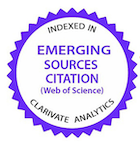Nutritional application of Bacillus spp. in broiler chicken and pig diets: a review
DOI:
https://doi.org/10.1590/1809-6891v26e-80036EAbstract
The aim was to determine the performance bases for the use of bacteria of the genus Bacillus as probiotics in the feeding of broilers and pig, assessing the ability of microorganisms to provide intestinal health development, productive yield and nutritional management of animals. To this end, a literature review was carried out, investigating specific words on various data platforms, in order to collect relevant studies on the subject. The two Bacillus species most commonly used in the nutrition of monogastric animals, such as poultry and pigs, are B. subtilis and B. licheniformis. However, there are also studies investigating the use of Bacillus in other species, such as fish and cattle. Most studies on the use of Bacillus in animal feed are carried out in different parts of the world, including countries such as the United States, Brazil, China and European countries. It is important to note that the prevalence and focus of studies also vary according to the specific needs and characteristics of each region. The benefits associated with the use of Bacillus in the nutrition of monogastrics include improved digestion of nutrients, especially protein and fiber; stimulation of the immune system, helping resistance to disease; reduction of colonization by pathogens in the gastrointestinal tract, promoting intestinal health and improved production performance, including weight gain and feed conversion. Studies on the use of Bacillus in monogastric nutrition can be conducted both nationally and internationally, depending on collaboration between research institutions and companies in the agricultural sector.
Downloads
References
Anee IJ, Alam S, Begum RA, Shahjahan RM, Khandaker AM. The role of probiotics on animal health and nutrition. J Basic Appl Zool. 2021 [cited 2024 Jul 20];82(1):1-16. Available from: https://doi.org/10.1186/s41936-021-00250-x
Arsène MMJ, Davares AKL, Andreevna SL, Vladimirovich EA, Carime BZ, Marouf R, Khelifi I. The use of probiotics in animal feeding for safe production and as potential alternatives to antibiotics. Vet World. 2021 [cited 2024 Jul 20;14(2):319-328. Available from: http://dx.doi.org/10.14202/vetworld.2021.319-328
Markowiak P, Śliżewska K. The role of probiotics, prebiotics and synbiotics in animal nutrition. Gut Pathog. 2018 [cited 2024 Jul 20];10(1):1-20. Available from: https://doi.org/10.1186/s13099-018-0250-0
Bhogoju S, Nahashon S. Recent advances in probiotic application in animal health and nutrition: a review. Agriculture. 2022 [cited 2024 Jul 20];12(2):1-16. Available from: https://doi.org/10.3390/agriculture12020304
Aria M, Cuccurullo C. Bibliometrix: an R-tool for comprehensive science mapping analysis. J Informetr. 2017 [cited 2024 Jul 20];11(4):959-975. Available from: https://doi.org/10.1016/j.joi.2017.08.007
Van Eck N, Waltman L. Software survey: VOSviewer, a computer program for bibliometric mapping. Scientometrics. 2010;84(2):523-538. Available from: https://doi.org/10.1007/s11192-009-0146-3
Hubert JJ. Linguistic indicators. Soc Indic Res. 1980;8(2):223-255. Available from: https://doi.org/10.1007/BF00286478
Aria M, Misuraca M, Spano M. Mapping the evolution of social research and data science on 30 years of Social Indicators Research. Soc Indic Res. 2020 [cited 2024 Jul 20];149(3):803-831. Available from: http://dx.doi.org/10.1007/s11205-020-02281-3
McCain RA. A linguistic conception of rationality. Soc Sci Inf. 1991 [cited 2024 Jul 20];30(2):233-255. Available from: http://dx.doi.org/10.1177/053901891030002002
Cobo MJ, López-Herrera AG, Herrera-Viedma E, Herrera F. An approach for detecting, quantifying, and visualizing the evolution of a research field: a practical application to the fuzzy sets theory field. J Informetr. 2011 [cited 2024 Jul 20];5(1):146-166. Available from: http://dx.doi.org/10.1016/j.joi.2010.10.002
Sen S. Effect of supplementation of Bacillus subtilis LS 1-2 to broiler diets on growth performance, nutrient retention, caecal microbiology and small intestinal morphology. Res Vet Sci. 2012 [cited 2024 Jul 20];93(1):264-268. Available from: http://dx.doi.org/10.1016/j.rvsc.2011.05.021
Hernandez-Patlan D, Solis-Cruz B, Pontin KP, Hernandez-Velasco X, Merino-Guzman R, Adhikari B, et al. Impact of a Bacillus direct-fed microbial on growth performance, intestinal barrier integrity, necrotic enteritis lesions, and ileal microbiota in broiler chickens using a laboratory challenge model. Front Vet Sci. 2019 [cited 2024 Jul 20];6:108. Available from: http://dx.doi.org/10.3389/fvets.2019.00108
Whelan RA, Doranalli K, Rinttilä T, Vienola K, Jurgens G, Apajalahti J. The impact of Bacillus subtilis DSM 32315 on the pathology, performance, and intestinal microbiome of broiler chickens in a necrotic enteritis challenge. Poult Sci. 2019 [cited 2024 Jul 20];98(9):3450-3463. Available from: http://dx.doi.org/10.3382/ps/pey500
Zhang B. Effects of Bacillus coagulans on growth performance, antioxidant capacity, immunity function, and gut health in broilers. Poult Sci. 2021 [cited 2024 Jul 20];100(6):101168. Available from: http://dx.doi.org/10.1016/j.psj.2021.101168
Zhao Y. Dietary probiotic Bacillus licheniformis H2 enhanced growth performance, morphology of small intestine and liver, and antioxidant capacity of broiler chickens against Clostridium perfringens–induced subclinical necrotic enteritis. Probiotics Antimicrob Proteins. 2020 [cited 2024 Jul 20];12:883-895. Available from: https://doi.org/10.1007/s12602-019-09597-8
Latorre JD. Evaluation of a Bacillus direct-fed microbial candidate on digesta viscosity, bacterial translocation, microbiota composition and bone mineralisation in broiler chickens fed on a rye-based diet. Br Poult Sci. 2015 [cited 2024 Jul 20];56(6):723-732. Available from: http://dx.doi.org/10.1080/00071668.2015.1101053
Hayashi RM. Effect of feeding Bacillus subtilis spores to broilers challenged with Salmonella enterica serovar Heidelberg Brazilian Strain UFPR1 on performance, immune response, and gut health. Front Vet Sci. 2018 [cited 2024 Jul 20];5:1-12. Available from: http://dx.doi.org/10.3389/fvets.2018.00013
Yeh RH, Hsieh CW, Chen KL. Screening lactic acid bacteria to manufacture two-stage fermented feed and pelleting to investigate the feeding effect on broilers. Poult Sci. 2018 [cited 2024 Jul 20];97(1):236-246. Available from: http://dx.doi.org/10.3382/ps/pex300
Lee SH, Ingale SL, Kim JS, Kim KH, Lokhande A, Kim EK, et al. Effects of dietary supplementation with Bacillus subtilis LS 1–2 fermentation biomass on growth performance, nutrient digestibility, cecal microbiota and intestinal morphology of weanling pig. Anim Feed Sci Technol. 2014 [cited 2024 Jul 20];188:102-110. Available from: https://doi.org/10.1016/j.anifeedsci.2013.12.001
Zani JL, Cruz FW da, Santos AF dos, Gil-Turnes C. Effect of probiotic CenBiot on the control of diarrhoea and feed efficiency in pigs. J Appl Microbiol. 1998 [cited 2024 Jul 20];84:68-71. Disponível em: https://doi.org/10.1046/j.1365-2672.1997.00309.x
Li HH, Jiang XR, Qiao JY. Effect of dietary Bacillus subtilis on growth performance and serum biochemical and immune indexes in weaned piglets. J Appl Anim Res. 2021 [cited 2024 Jul 20];49(1):83-88. Available from: https://doi.org/10.1080/09712119.2021.1877717
Peet-Schwering CMC van der, Verheijen R, Jørgensen L, Raff L. Effects of a mixture of Bacillus amyloliquefaciens and Bacillus subtilis on the performance of growing-finishing pigs. Anim Feed Sci Technol. 2020 [cited 2024 Jul 20];261(114409). Available from: http://dx.doi.org/10.1016/j.anifeedsci.2020.114409
Ding H. Dietary supplementation with Bacillus subtilis DSM 32315 alters the intestinal microbiota and metabolites in weaned piglets. J Appl Microbiol. 2021 [cited 2024 Jul 20];130(1):217-232. Available from: https://doi.org/10.1111/jam.14767
Jia R, Sadiq FA, Liu W, Cao L, Shen Z. Protective effects of Bacillus subtilis ASAG 216 on growth performance, antioxidant capacity, gut microbiota and tissue residues of weaned piglets fed deoxynivalenol contaminated diets. Food Chem Toxicol. 2021 [cited 2024 Jul 20];148:111962. Available from: http://dx.doi.org/10.1016/j.fct.2020.111962
Ji J, Hu S, Zheng M, Du W, Shang Q, Li W. Bacillus amyloliquefaciens SC06 inhibits ETEC-induced pro-inflammatory responses by suppression of MAPK signaling pathways in IPEC-1 cells and diarrhea in weaned piglets. Livest Sci. 2013 [cited 2024 Jul 20];158(1-3):206-214. Available from: http://dx.doi.org/10.1016/j.livsci.2013.09.017
Huang HJ, Weng BC, Hsuuw YD, Lee YS, Chen KL. Dietary supplementation of two-stage fermented feather-soybean meal product on growth performance and immunity in finishing pigs. Animals. 2021 [cited 2024 Jul 20];11(6):1527. Available from: http://dx.doi.org/10.3390/ani11061527
Latorre JD, Hernandez-Velasco X, Vicente JL, Wolfenden R, Hargis BM, Tellez G. Effects of the inclusion of a Bacillus direct-fed microbial on performance parameters, meat quality, recovered gut microflora, and intestinal morphology in broilers consuming a grower diet containing corn distillers dried grains with solubles. Poult Sci. 2017 [cited 2024 Jul 20];96(8):2728-2735. Available from: http://dx.doi.org/10.3382/ps/pex082
Kim J, Bayo J, Cha J, Choi YJ, Jung MY, Kim D, et al. Investigating the probiotic characteristics of four microbial strains with potential application in feed industry. PLoS One. 2019 [cited 2024 Jul 20];14(6). Available from: http://dx.doi.org/10.1371/journal.pone.0218922
Soares MB. Behavior of different Bacillus strains with claimed probiotic properties throughout processed cheese (“requeijão cremoso”) manufacturing and storage. Int J Food Microbiol. 2019 [cited 2024 Jul 20];307. Available from: http://dx.doi.org/10.1016/j.ijfoodmicro.2019.108288
Dutta D, Ghosh K. Screening of extracellular enzyme-producing and pathogen inhibitory gut bacteria as putative probiotics in mrigal, Cirrhinus mrigala (Hamilton, 1822). Int J Fish Aquat Stud. 2015;2(4):310-318.
Bahaddad SA, Almalki MH, Alghamdi OA, Sohrab SS, Yasir M, Azhar EI, et al. Bacillus species as direct-fed microbial antibiotic alternatives for monogastric production. Probiotics Antimicrob Proteins. 2023 [cited 2024 Jul 20];15(1):1-16. Available from: https://doi.org/10.1007/s12602-022-09909-5
Latorre JD. Evaluation and selection of Bacillus species based on enzyme production, antimicrobial activity, and biofilm synthesis as direct-fed microbial candidates for poultry. Front Vet Sci. 2016 [cited 2024 Jul 20];3:1-2. Available from: http://dx.doi.org/10.3389/fvets.2016.00095
Wan MLY, Forsythe SJ, El-Nezami H. Probiotics interaction with foodborne pathogens: a potential alternative to antibiotics and future challenges. Crit Rev Food Sci Nutr. 2018 [cited 2024 Jul 20];59(20):3320-3333. Available from: http://dx.doi.org/10.1080/10408398.2018.1490885
Ruiz Sella SRB, Bueno T, Oliveira AAB de, Karp SG, Soccol CR. Bacillus subtilis natto as a potential probiotic in animal nutrition. Crit Rev Biotechnol. 2021 [cited 2024 Jul 20];41(3):355-369. Available from: http://dx.doi.org/10.1080/07388551.2020.1858019
Published
How to Cite
Issue
Section
License
Copyright (c) 2025 Brazilian Animal Science/ Ciência Animal Brasileira

This work is licensed under a Creative Commons Attribution 4.0 International License.
Authors who publish with this journal agree to the following terms:
- Authors retain copyright and grant the journal right of first publication with the work simultaneously licensed under a Creative Commons Attribution License that allows others to share the work with an acknowledgement of the work's authorship and initial publication in this journal.
- Authors are able to enter into separate, additional contractual arrangements for the non-exclusive distribution of the journal's published version of the work (e.g., post it to an institutional repository or publish it in a book), with an acknowledgement of its initial publication in this journal.
- Authors are permitted and encouraged to post their work online (e.g. in institutional repositories or on their website) prior to and during the submission process, as it can lead to productive exchanges, as well as earlier and greater citation of published work (See The Effect of Open Access).
Data statement
-
The research data is available on demand, condition justified in the manuscript































